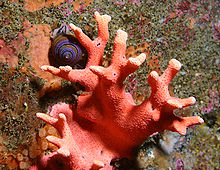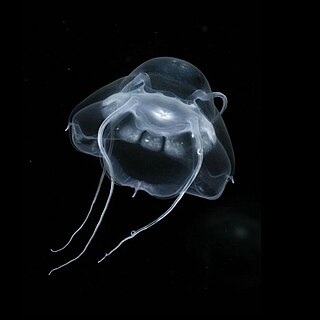| Anthoathecata | |
|---|---|
 | |
| Anatomical details of Pandeidae (Filifera). Lower left, top right: Neoturris pileata . Lower right: Stomotoca pterophylla . From Kunstformen der Natur by Ernst Haeckel (1904) | |
| Scientific classification | |
| Domain: | Eukaryota |
| Kingdom: | Animalia |
| Phylum: | Cnidaria |
| Class: | Hydrozoa |
| Subclass: | Hydroidolina |
| Order: | Anthoathecata Haeckel, 1879 |
| Suborders | |
and see text | |
| Synonyms | |
| |
Anthoathecata, or the athecate hydroids, are an order of hydrozoans belonging to the phylum Cnidaria. A profusion of alternate scientific names exists for this long-known and heavily discussed group. It has also been called Gymnoblastea and (with or without an emended ending -ae), Anthomedusa, Athecata, Hydromedusa, and Stylasterina. There are about 1,200 species worldwide. [1]
Contents
These hydrozoans always have a polyp stage. Their hydranths grow either solitary or in colonies. There is no firm perisarc around the polyp body. The medusae, or jellyfish, are solitary animals, with tentacles arising from the bell margin, lacking statocysts but possessing radial canals. Their gonads are on the manubrium ("handle"). [2]
Except in Eudendriidae and Laingiidae, prey can be captured by discharging harpoon-like structures (desmonemes) from chambers (cnidae) in specialized cells (nematocysts) on the tentacles. In hydrozoans, these are nearly always adhesive and entrapping, rather than puncturing and venomous as in other jellies. [2]





















